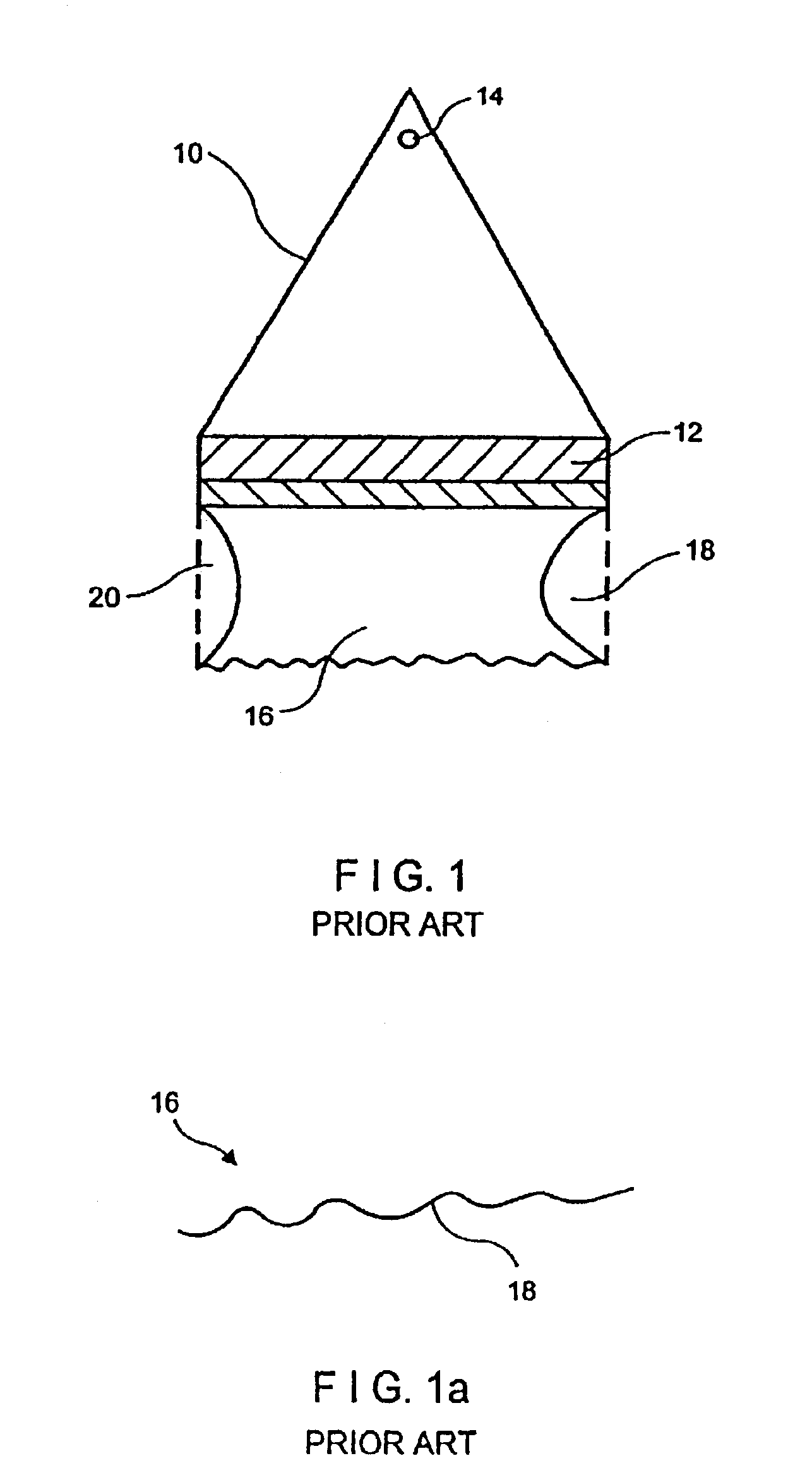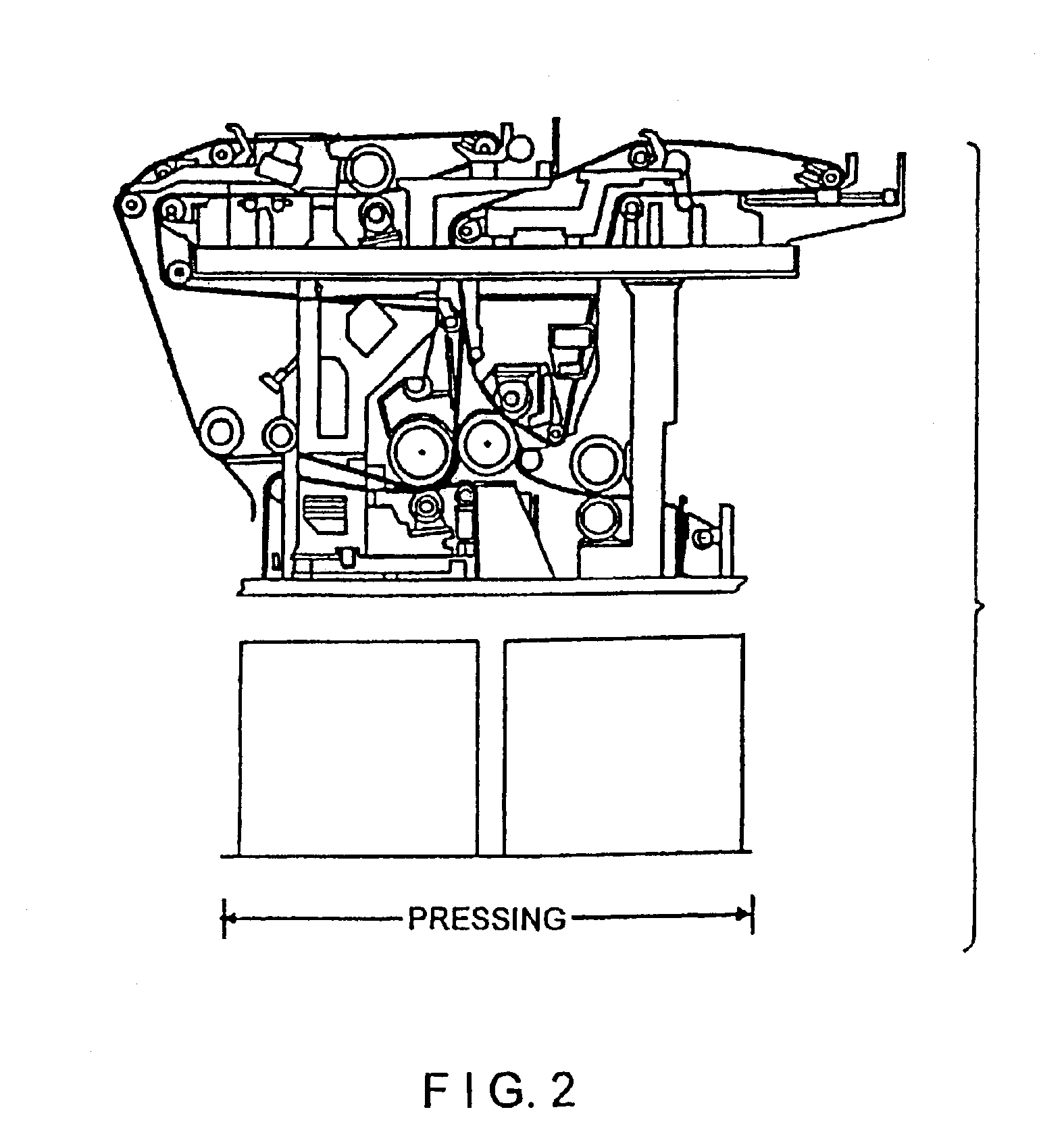Multi-tier rope harness
a rope harness and multi-tier technology, applied in the field of papermaking arts, can solve the problems of difficult to streamline the manufacturing process, reduce the quality of papermaking fabrics, and reduce the efficiency of papermaking machines, so as to facilitate the loading of papermaking fabrics
- Summary
- Abstract
- Description
- Claims
- Application Information
AI Technical Summary
Benefits of technology
Problems solved by technology
Method used
Image
Examples
Embodiment Construction
[0038]Initially, FIG. 2 shows a side view of the press section of a papermaking machine. FIG. 3 shows a side view of the drying section of a typical papermaking machine. The path of the fabric used in these sections is illustrated therein. The present invention is used to load a fabric onto such papermaking machines.
[0039]The multi-tier fabric loading harness according to the present invention is a rope harness attached to a leader to assist in loading fabrics onto paper machines. The harness is self-leveling and is constructed of at least two tiers with each tier being made from a continuous length of rope. The leader is supported widthwise by a rigid member. For example, a metal bar may be inserted through the entire width of the leader. The first tier (or level) of rope is formed by fastening the rope to an aperture at one edge of the leader and loosely looping the rope through a series of apertures across the width of the leader and fastening the end of the rope to an aperture a...
PUM
| Property | Measurement | Unit |
|---|---|---|
| length | aaaaa | aaaaa |
| length | aaaaa | aaaaa |
| angle | aaaaa | aaaaa |
Abstract
Description
Claims
Application Information
 Login to View More
Login to View More - R&D
- Intellectual Property
- Life Sciences
- Materials
- Tech Scout
- Unparalleled Data Quality
- Higher Quality Content
- 60% Fewer Hallucinations
Browse by: Latest US Patents, China's latest patents, Technical Efficacy Thesaurus, Application Domain, Technology Topic, Popular Technical Reports.
© 2025 PatSnap. All rights reserved.Legal|Privacy policy|Modern Slavery Act Transparency Statement|Sitemap|About US| Contact US: help@patsnap.com



